Ekebergia capensis
| Botanical Name | Ekebergia capensis |
|||||||||||
| Family | Meliaceae - The mahogany family. |
|||||||||||
| Pronunciation | eck-ka-BER-gee-uh ka-PEN-sis |
|||||||||||
| Common Name(s) |
English: Cape ash; Dogplum; Mountain Ash
Afrikaans: Essenhout; Rooi-essenhout; Vaalessenhout
IsiXhosa: umnyamati
IsiZulu: uVungu; uManaye; umGwenyawezinja
Sesotho sa Leboa: Mmaba; Mmidibidi
Setswana: Nyamaru; Motshai
|
|||||||||||
| Plant Group |
|
|||||||||||
| Plant Size |
|
|||||||||||
| Position |
|
|||||||||||
| General Information |
|
|||||||||||
| Specific Information | Ekebergia capensis is a useful, ornamental shade tree with glossy, drooping compound leaves and a neat rounded crown. In favourable conditions the trees flower conspicuously every year but in other localities they may only flower once every few years. The large, round, fleshy fruits, 1 - 2 cm in diameter, with an onion-like taste, turn bright pink to red in autumn, attracting Knysna and Purple-crested louries, barbets, bulbuls, mousebirds and hornbills. Do not plant overhanging driveways or washing lines as the falling fruit and visiting birds can make quite a mess. |
|||||||||||
| Ad Break | ||||||||||||
| Flowers | ||||||||||||
| Description | Small, star-shaped flowers on a loose spray. |
|||||||||||
| Season |
|
|||||||||||
| Colour |
|
|||||||||||
| Growth Rate |
|
|||||||||||
| Plant Uses |
|
|||||||||||
| Distribution and Habitat | in the Eastern Cape, KwaZulu-Natal, Mpumalanga and Limpopo, as well as Swaziland, southern Mozambique, Zimbabwe and north into Uganda and Ethiopia, in evergreen forests and riverine forests |
|||||||||||
| Planting Suggestions | Mulch deeply. Water well for quick results. Around Bathurst the Cape ash have survived and thrived in dry conditions. The old method of digging a deep hole and filling it with soil and compost has resulted in many trees failing to thrive, dying, rotting at the base or worse still, falling over in later years due to poor root development. Refer to the following sites for the best method of planting trees: International Society of Arboriculture: New Tree Planting Tree People: Plant the right way For those of you who have a clay problem try: |
|||||||||||
| Medicinal Uses | This wide-spread tree has a number of traditional uses: for tanning, as an emetic, for treating dysentery, headaches, heartburn, chronic coughs, intestinal worms and to protect the chief from witchcraft. |
|||||||||||
| Ad Break | ||||||||||||


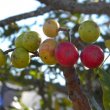
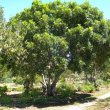
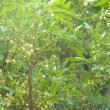
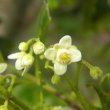

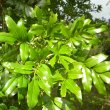


Comments
Cape ash tree
Hi there, Can i transplant a 4 year old Cape ash tree?
Thanks.
Hein Wiese
Transplanting older trees
I cannot speak from experience but the fact the Ekebergia capensis does not have an aggressive root system is in your favour. Also, the tree is still quite young and with proper handling it should survive. Lifting trees for transplanting is really best done by experts in large tree removal and planting, but if you wish to give it a try, read through the website: http://www.ag.ndsu.edu/pubs/plantsci/trees/f1147w.htm It makes reference to American trees, laws and so on, but the basic method is outlined and will give you the guidelines to be followed for a successful transplanting. If you do move the tree, please let us know about your experience - I have had a number of queries on this subject and it would be useful to have some feedback.
cape ash
can i plant a cape ash near a sewerage system
Cape ash - root invasion?
Hi Rose
In my opinion, because the roots of the Cape ash are not invasive, you should be safe, but it may be wise to uncover the pipes and ensure that the joins are properly sealed. I have found that this is where trees are most likely to enter the pipes, leading to blockages and regular visits from the rotor rooter man! The only trees I have come across that have been problematic in this way are Willow trees and Poplar trees, both of which are notoriously invasive. It it were me, I'd take the chance.
Cape ash
Why is the leaves of my Cape ash turning yellow. I planted two in Plettenberg Bay on thew same day. One is doing well but the other is looking sad with yellow leaves
Eckebergia capensis - yellowing leaves
Hi Linette
Without more information about the plant, I cannot give you a specific answer. There are a number of reasons for yellowing leaves, depending on the size and age of the tree, the amount of water given, the soil type and the soil PH and mineral content. I will assume these are nursery bought trees which have been planted relatively recently.
The poorly one may still be adjusting to the new environment and soil. The root may have been damaged during planting, or too much fertiliser may have burned the roots. The tree may be receiving too much or too little water. If the young tree's roots were pot bound, the root will continue to curl around itself and will not be able to access the nutrients in the soil. Yellowing leaves may also indicate a lack of iron in the soil. Even within the same yard, there may be perfectly healthy green trees of the same species growing right next to one with an iron deficiency. I hope that within the above information you will be able to identify your problem.
Hi
Hi
We would like to plant this tree next to a tar road in the Citrusdal village. Temperatures in summer rise to 43C, in winter drops to close to zero. Will this tree be suitable?
Ekebergia capensis suitability
Hi Mariet
I am afraid I can't give you a definite answer. Your higher temperatures worry me though, as this species is found naturally in forest surroundings where a certain amount of protection is afforded. It may survive but not thrive. It would certainly need plenty of water during the summer months. It may be best to choose a species that is more tolerant of your local conditions.
Regards
Lorraine
Cape Ash
A cape ash handles warm and varied temperatures well. We have planted many here in Hoedspruit where the temperature often exceeds 40 and in winter does drop to close on zero
Cape ash: versatile for both high and low temperatures
Hi Winston
Apologies for the time it took to reply.
Many thanks for sharing your useful observations. First hand advice is most appreciated.
Kind regards
Lorraine
Pruning Natal Mahogany
I have 4 trees planted approximately 1m apart They range in height from 6m to 10 m Pse could you advise on pruning or "topping" to limit growth and maintain a decent structure? Should I consider having 2/3 transplanted given proximity to one another?
Natal Mahogany
Hi Ryan
This is quite out of my area of expertise, but here are my thoughts.
Trichelia emetica is a large tree reaching from 20 - 30 meters high, with a beautifully rounded crown of 10 to 15 meters across. I would certainly suggest removing all but one. This would preferably need to be done by an expert tree person, as I am not au fait with whether these trees will even tolerate transplanting. My feeling is that they are so close together that the roots of all of them are going to be severely compromised by the removal of any of them.
Having topped a couple of trees in the past, I have discovered that topping does not limit their growth. They simply send up new shoots and the naturally pleasing shape of the tree may be permanently spoiled. If the trees must be topped and shaped, again I would suggest calling in an expert for advice.
As I do not know where you are situated, I cannot suggest a suitable company to help you with this project. Use your Yellow pages or the internet to find expert advice on tree removal. Type in: big tree transplanting South Africa, and the name of your town. If there are no companies in your area, write to a few of the companies you find on the net and they may be able to advise you further.
Hope you find a suitable solution.
Kind regards
Lorraine
Cape Ash
Dear All
I intend planting a Cape Ash in my mothers garden, but I am not willing to plant a tree that does damage to the basement of the house. Can anybody tell me if the roots are known to damage the foundation?
Looking foreard to your reply
Regards Heike
Cape Ash root system
Hi Heike
Cape Ash is a most useful plant for gardens as the root system is well documented as being non-invasive. I have had no reports and found no evidence to the contrary. I would certainly go ahead as this makes a lovely shade tree. With some feeding and regular deep watering, the tree can grow quickly - 1 meter or more a year.
Regards
Lorraine
Cape Ash badly pruned 10 years ago.
Good afternoon
We recently moved into a house with a 10-15m Cape Ash in the garden. It was badly "topped" about ten years ago, and, although looking very well and healthy from far away, on closer inspection nearly all the branches are stemming directly above major pruning scars (about 20-30cm in diameter) that are rotten/rotting. I dug out large bucket-fulls of fine sand filled with beetle larvae in some of these scars. The tree also has 5 trunks that radiate out, and the space in between them (where a single solid trunk should be)has deep recesses that are ant infested. I am worried that this beautiful tree will literally fall apart. We want to install a tree house, as my kids love this tree, and they and their friends spend hours climbing and playing in it. How best can I look after the tree to prevent it from dying/ breaking apart. Is there any advice you could offer?
Kind regards
Sonia
Cape Ash in dire straits.
Hi Sonia
Thanks for your clear description. To be brutally honest, I have grave doubts as to whether this tree can be saved. The ant activity alone suggests that this tree is on the way out. If the rot has gone deep, which appears to be the case, the weight of the trunks will cause them to collapse as the base disintegrates. However, I am not a tree expert. The best suggestion I can make is to contact a 'tree doctor' who will be able to give you a proper diagnosis. With the safety of your children in mind, I would urge you to go this route.
If you let me know where you live, I may be able to find a contact for you. It would also be appreciated if you could send a photo or two of the tree and the damage in the centre.
Kind regards
Lorraine
Thanks for the speedy reply
Thanks for the speedy reply Lorraine.
I have just had the third "Tree man" come look at the tree this afternoon, and am feeling rather frustrated as each has offered a different opinion, from "It's fine" all the way to "Top the whole tree" which is what I feel caused this mess in the first place!
I live in Port Elizabeth, and there is unfortunately no tree doctor here that I have been able to locate. Do you perhaps know of anyone?
I will take some photos and upload them for your inspection.
How can I get rid of the ants? My enormous coral tree is also full of them...
Ant infestation
Hi Sonia
I searched around but could also not find a tree expert in your area. I would definitely hesitate at topping the tree. What often happens is that young growth shoots up on thin branches and from what I have observed, the thicker stems just become top heavy all over again. If it seems sturdy I would probably leave it but check on it every now and then for signs of splitting, increased leaning or further rot.
Ah... the ants. They are the bane of my life. They nest under my aloes, they invade my foundations and invariably where you find disease or pests, you will find ants. I very seldom use poisons but in a case like this it seems the only solution.
Part of my lemon tree died at the base and the area became infested with ants (which in turn resulted in a massive attack of scale and the knock off addition of sooty mould). We flooded the ant nest with ant poison numerous times before we began to see results. These nests go deep with many complicated burrows so it takes time before the bulk of the colony is affected. Even so we have not been able to eradicate the pests entirely and have to flood the nest every few weeks. This is all I can suggest. Unless your Coral tree is being severely affected by ants, I doubt there is much you can do.
I would still like to see some pics if you get the chance.
Kind regards
Lorraine
Ekebergia capensis
Is Ekebergia capensis suitable as a car park tree?
Cape Ash: suitability for car park
Hi Joanna
Yes and no.
The Cape ash has all the positives needed for a car park tree: deep shade, non-invasive root system, evergreen and an attractively rounded shape. That's the 'yes' bit.
However, you will have read under 'Specific information' above, "Do not plant overhanging driveways or washing lines as the falling fruit and visiting birds can make quite a mess." As you can see from the photo the fruit is quite large and when ripe becomes very soft and squishy.
Here are two scenarios:
I have not had this problem myself. I have many of these trees in my garden and although they flower quite well, they seldom set fruit and those that do fruit, do so in very small quantities. My garden is extremely dry and the soil is poor in nutrients, which may be why the fruiting is poor.
On the other hand there is a Cape Ash in Port Alfred that fruits every year in huge quantities. The ground below the tree is thickly covered with rotting fruit which smells ever worse as the season progresses. You literally cannot walk below this tree without the danger of slipping on the mush. This tree is positioned in a garden with better soil, more water and higher humidity.
Hence the answer 'yes and no'. If you let me know where you are situated, I may be able to suggest alternative trees that could be used for this purpose.
Kind regards
Lorraine
Cape Ash as car park tree.
Hi Lorraine ,
Thank you very much for your helpful information re the Cape Ash.
We live in Harare on the highveld. About the end of 2012 we planted 8 of these trees (on the recommendation of a local indigenous trees nursery) in the centre of our parking area at our Kingdom Hall ( of Jehovah's Witnesses). We have recently paved the car park and the trees remain in a metre wide strip down the middle.
Some of our members have expressed concern about the possibility of the root system lifting the paving in years to come. We are reluctant to remove the tees as they are now approximately 3metres high.
I am a little worried about your squishy fruit comment ! I hope that with our high altitude and low humidity that their fruit will be sparse?!!
What watering strategy do you recommend during our long dry season from April-November? The area is relatively frost free and we have planted a Golden Duranta hedge between the trees to separate the two parking areas.
Do you think the trees will be do well in our situation? I look forward to your advice on this matter.
Kind regards,
Joanna.
Cape Ash: suitability for car park
Hi Joanna
I can't guarantee that these trees will not disturb the paving in years to come, but any damage is likely to be very minor due to the fact that these trees do not have an aggressive root system. Personally, I'd rather risk a bit of lifting for the relief the shade will provide. I would also be most reluctant to replace the trees at this stage. The Cape ash is used near swimming pools, can be planted next to walls and is suggested as a shade tree for driveways.
I suspect (and hope) that you are right about the fruiting. From what I have seen it would appear that a humid, wetter climate encourages fruiting while a drier situation seems to repress fruiting. Which brings us to watering.
It is really difficult to assess how much water the trees will need in your climate. I would consider watering them deeply about every three weeks. Deep watering should encourage the roots to go down rather than spread out in search of moisture. Your ultimate aim is to harden the trees so that they are able to survive without supplementary water, so by the time between watering can be extended to a month then to six weeks over the next two years and after that only if the weather has been exceptionally dry. If the trees show signs of stress (leaves start to turn yellow and drop), it's time to water them.
I can see no reason why the trees should not thrive. They are found all the way into north-east Africa and seem to flourish under a wide variety of situations. I think you have made an excellent choice.
All the best
Lorraine
Cape Ash Transplant
We want to transplant a number of cape ash trees which are 3 metres maximum in height. They are around 4 years old. Is that suitable for this tree? Will they survive?
Transplanting older trees
Hi Innes
The trees you want to plant are quite large and I can in no way guarantee successful results. However, I would think your chances of success are pretty good if the trees are correctly handled during the transplanting process. As I am not an expert in this, you would need to gather some information from other sources.
I have found the following sites that you can peruse and draw out any information you find pertinent to your situation. They do not deal with Ekebergia specifically but give suggestions for the transplanting of trees with taproots.
http://forums2.gardenweb.com/forums/load/trees/msg0610205622675.html
http://takingplaceinthetrees.net/2013/02/25/the-taproot-question-again/
http://www.landscapeonline.com/research/article/4928
https://www.facebook.com/Gardendezine/posts/593472124042800
You could also contact a tree expert or tree doctor, but you would have to pay for their advice.
Kind regards
Lorraine
Cape Ash
I live in Vermont near Hermanus. Our neighbour has planted a cape ash in their garden right next to the boundary wall. How big would the tree be expected to grow in this area, and will its soft wood be able to withstand the heavy wind we get here?
Cape Ash in the Western Cape
Hi Jane
As I am not familiar with the growth of this tree in the Western Cape, I can't comment with any certainty.
As to wind, my trees cope with sustained winds of 40 to 45 kilometres with gusts of up to about 60 km.
As to size, it is impossible to say, especially as you are in a winter rainfall area, which will impact on its growth. I would surmise that with all the extra water, it could grow quite large. Consider also, that with it being so close to your wall, you will have almost half of the tree hanging over into your yard!
Kind regards
Lorraine
Cape Ash in Stellenbosch
Good day. I have a Cash Ash sapling and would like to plant it next to my drive way. I live in a housing estate in Stellenbosch. The fruit concerns me as not only will our cars get dirty but I am sure we will receive complaints if the fruit litter the road. From the above posts I see that some trees do not bear fruit. Would you perhaps know if conditions in Stellenbosch (Kylemore) would suit no fruiting? Or could you suggest an alternative fast growing tree?
Many thanks
Lizette
Fruiting conditions
Hi Lizette
I know of no particular reason why one tree will fruit and another will not. There are so many variables that affect this. Some trees will not fruit for years then suddenly start fruiting, others will stop fruiting for a few years and then start up again.
The following sites have lists of trees for Cape Town gardens:
http://www.sanbi.org/sites/default/files/documents/documents/treelistwcf...
http://ekapa.ioisa.org.za/module10/M10treesandshrubs.htm
http://gardeningeden.co.za/plants-regional-western-cape.html
Some of my favourites are: Diospyros whyteana, Halleria lucida, Kiggelaria africana, Searsia lancea, Virgilia divaricata, Virgilia oroboides, Loxystylis alata, Pittosporum viridiflorum, Dais cotonifolia, Searsia leptodictya. These have non-invasive roots and are not too messy, but there are many others listed.
Before making a choice it is wise to read up about the tree to check for root size, fruiting, flowering etc. If the tree is not included on this website, go to: http://www.plantzafrica.com/frames/plantsfram.htm, where you will find information about most of the trees listed.
Kind regards
Lorraine
Best time to plant a Cape Ash
Hi Lorraine
We live on the border between Gautneg and the Freestate.
Which is the best time to plant a Cape Ash? now or must I wait until March or rather Spring?
When to plant
Hi Wanja
The answer to this question is the same as I suggested for the Dombeya rotundifolia, but for the sake of other readers I have repeated it here:
If Vanderbijl is as cold in winter as I remember, the best time would probably be at the end of winter or in early spring. This would give the young tree time to adjust to the shock of transplanting and have some sturdy growth by the time winter arrives.
Alternatively, you could plant it immediately but it may need some protection on excessively hot days as well as in winter during frosty periods. For frost protection, use three or four tall sticks tied like a tepee at the top and wrapped with some shade netting, or even a sheet. Netting can be left over the sapling during the day but sheeting or Hessian should be removed during the day and replaced as the evening cools down. For a bit of shade on very hot days, I often use four sticks stuck in the ground around the tree and hang a cardboard box upside-down over the young tree during the hottest part of the day. The sturdiness of the structure you make for protection will depend on the strength of the winds you get.
If you have already bought the tree, I would be tempted to plant it immediately - the sooner it is out of the nursery bag, the sooner it can start to grow. Just remember to take extra care of it in winter.
Kind regards
Lorraine
Galls
Hi Lorraine
What can be possible causes for galls forming on the leaves and stems of a cape ash?
Kind regards
Daine
Galls on Cape ash
Hi Daine
The galls are caused by a small winged insect that looks like an aphid with wings. In this case it is probably the Citrus psylla but I am only guessing as I do not have a picture to work from. The immature insects are flat, disc-like insects that feed on the undersides of the leaves resulting in the unsightly galls.
I have noticed that in some years the insects attack in vast numbers and in others there are very few or they do not appear at all. I have got to the point where I just ignore them but in a small garden I imagine that they could be a real eye-sore.
You can try an organic insecticide (Margaret Robert's Organic insecticide - http://www.gardencare.co.za/profile_insecticide.htm), or insecticide containing Cholrpyrifos, dimethoate or oxydemeton-methyl. Do bear in mind that the chemical insecticides will kill beneficial insects and bees, as well as have a negative or poisoning effect on geckos, lizards, birds and other tree dwellers.
KInd regards
Lorraine
Is it safe to use ekebergia capensis as braai wood?
Hi Lorraine
we have a large Cape Ash tree. We recently had to "trim" the tree. Is it safe to use as firewood?
Thanks.
Rika
Use of Ekebergia capensis for braai wood
Hi Rika
I cannot give you a definite yes/no answer, but I imagine that there should be no problem. I have been able to trace no information the indicates that the tree is any way poisonous - if it were, warnings would be found.
For myself, I would go ahead and experiment just to make sure that the smoke given off does not impart an unpleasant flavour to the meat.
Kind regards
Lorraine
Ekebergia Cuttings
Hi there. Could you please provide some insight into taking and propagating from Ekebergia cuttings. I am based in the garden route, Western Cape.
Ekebergia cuttings and truncheons
Hi Kei
I have not had experience with this but according to my research, the Cape ash can successfully be grown from cuttings, this being the fastest method of propagating this tree. Tip cuttings from the end of branches or hardwood cuttings can be planted in trays/pots filled with coarse, clean river sand and larger cuttings or truncheons can reportedly be planted directly into the ground.
For tip and small hardwood cuttings, I have taken ideas from the following video and have had much better results with my cuttings:
https://www.youtube.com/results?search_query=mike%27s+backyard+nursery
Below are pics. of my cuttings trays - used bin bags - good colour and suitable size.
I have found little detailed information regarding truncheons. The following site is useful:
https://gardening.stackexchange.com/questions/17523/can-trees-be-propaga...
Hope this helps.
Kind regards
Lorraine
Very Helpful
Thank you, that information does help my cause. Have a wonderful weekend.
Discuss this plant
Share knowledge, ask a question or give an experience.